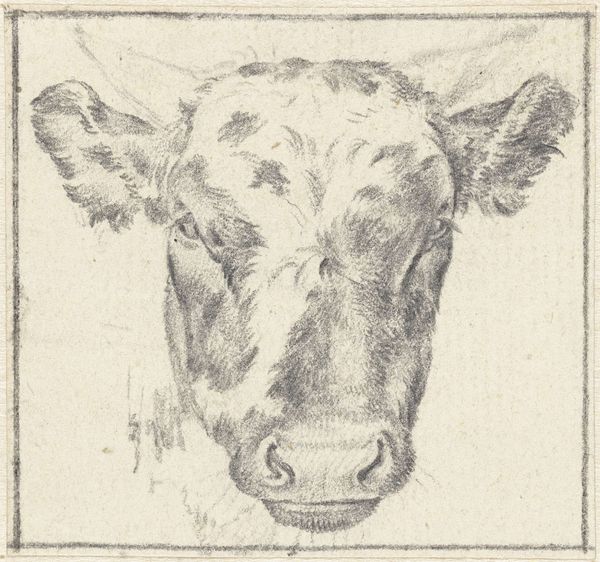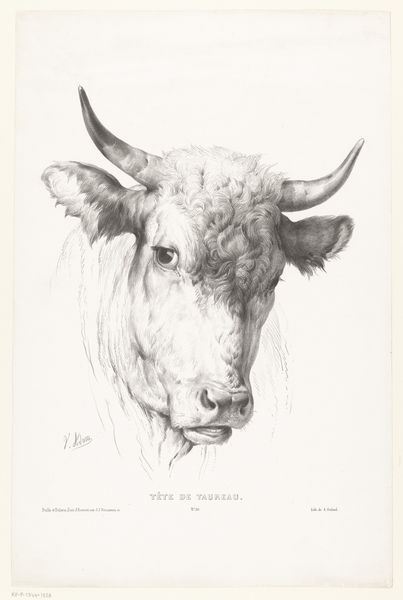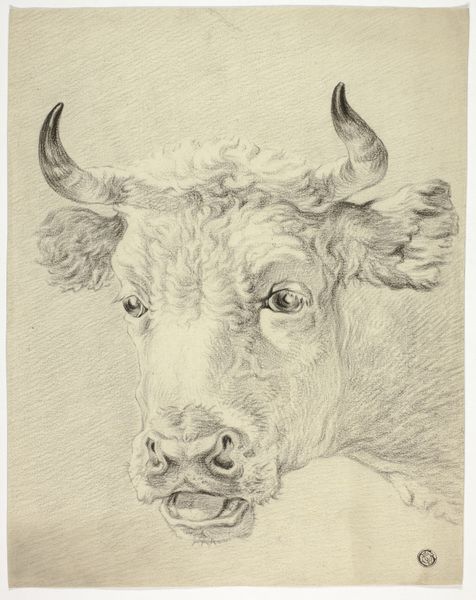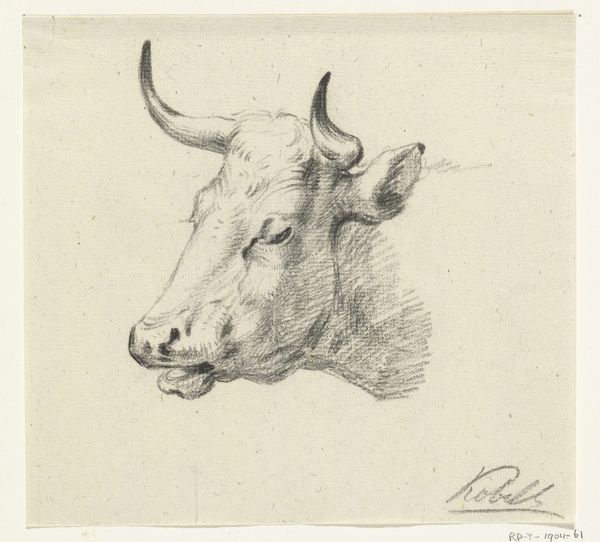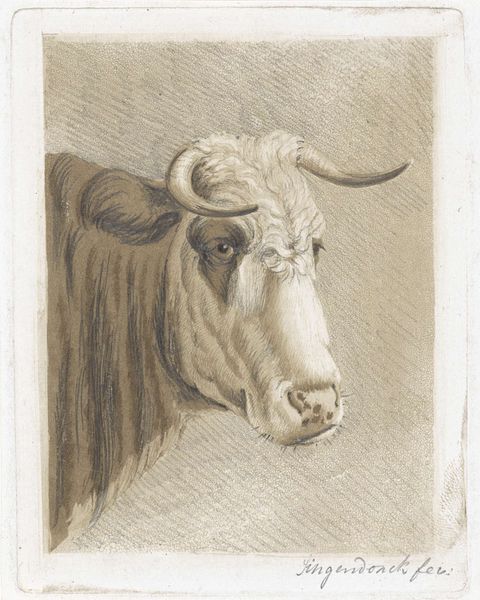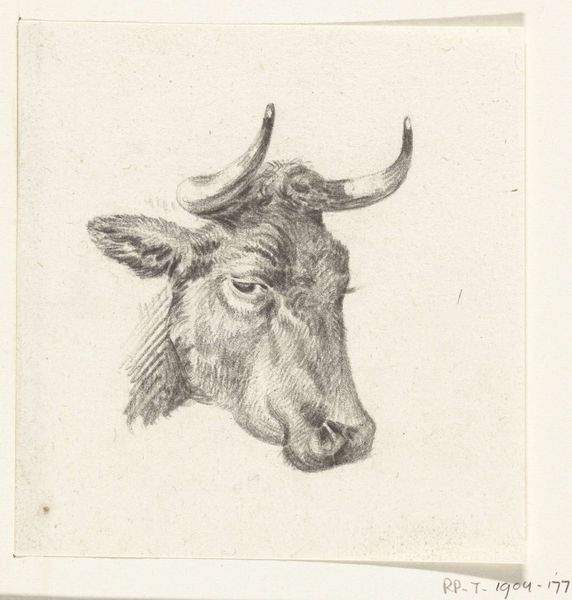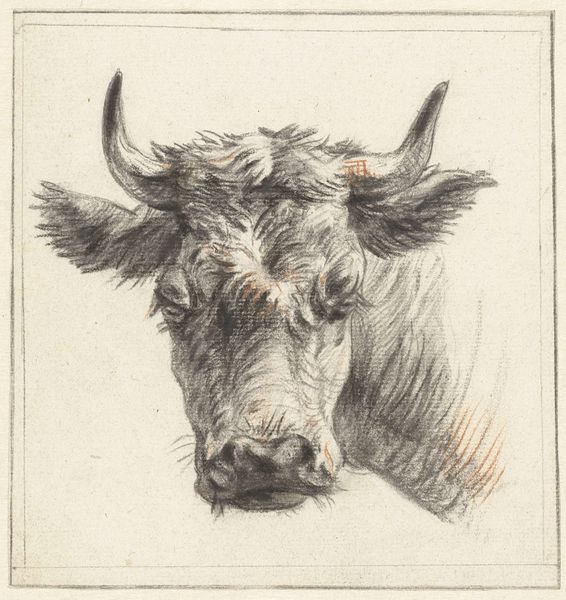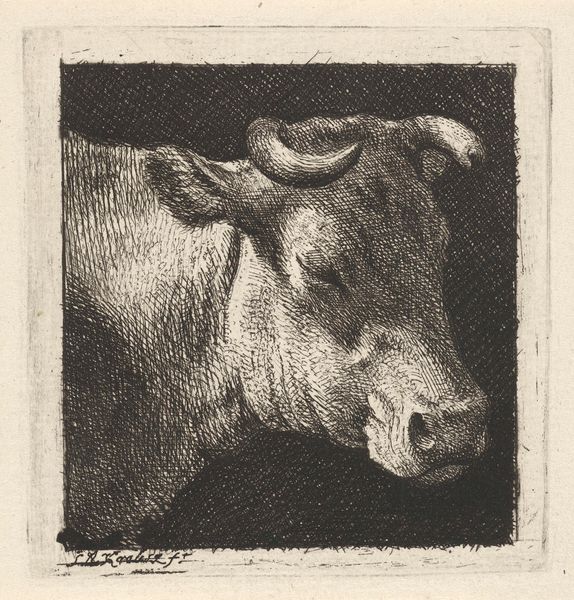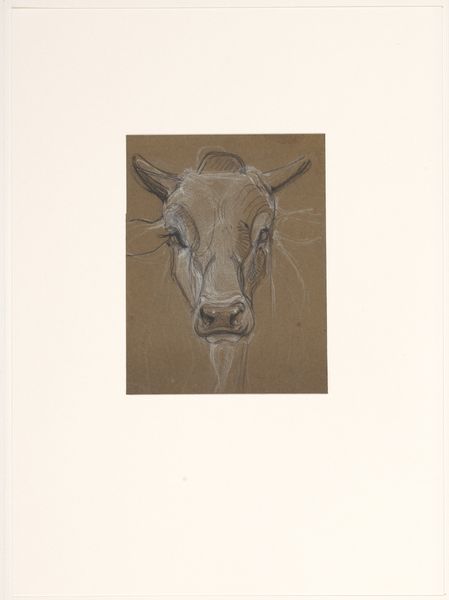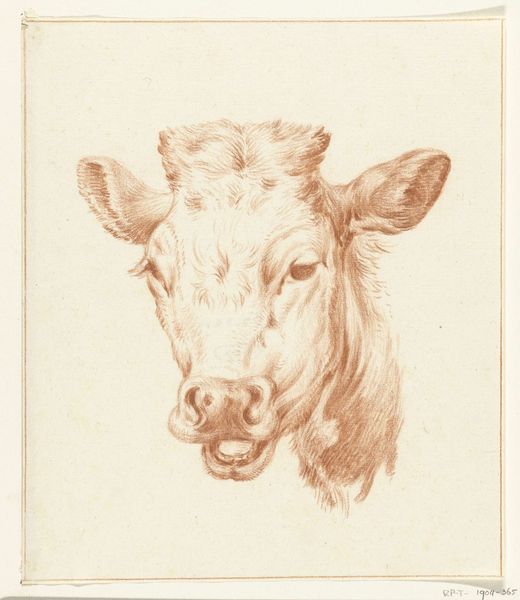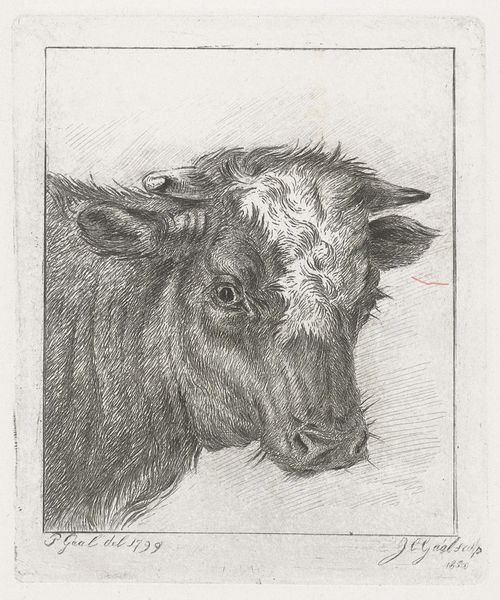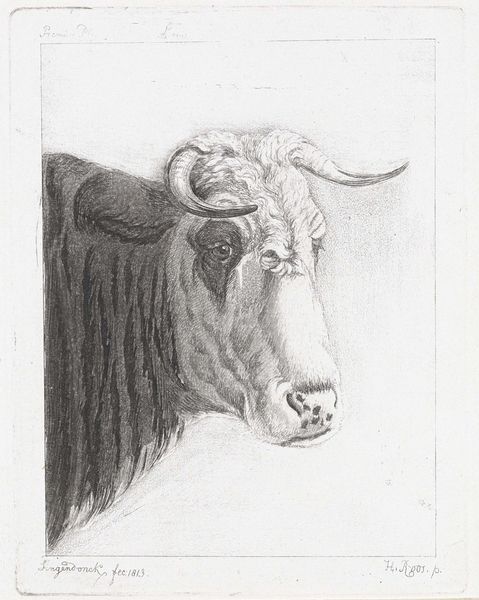
drawing, print, paper, ink
#
portrait
#
drawing
# print
#
paper
#
ink
#
romanticism
#
realism
Dimensions: 166 mm (height) x 142 mm (width) (plademaal)
Johan Thomas Lundbye made this drawing of a calf's head, ‘Et kalvehoved’, in 1842. It is a galvanograph, a then-new printing technique, which makes it part of the history of the mass reproduction of images. Lundbye was part of the Danish Golden Age, when artists turned to the local landscape and folk life for inspiration, constructing a national identity. How does an image of a calf’s head fit into this? Perhaps it reflected the rural realities of much of the population, or spoke to new scientific interests in animal anatomy. The chain around the calf's neck – is this realism or symbolism? We can explore this artwork further by researching the agricultural practices of the time, the role of animals in Danish society, and the artistic conventions of the Golden Age. Art history is not just about aesthetics, but about understanding the social and cultural contexts that shape artistic production and meaning.
Comments
No comments
Be the first to comment and join the conversation on the ultimate creative platform.
